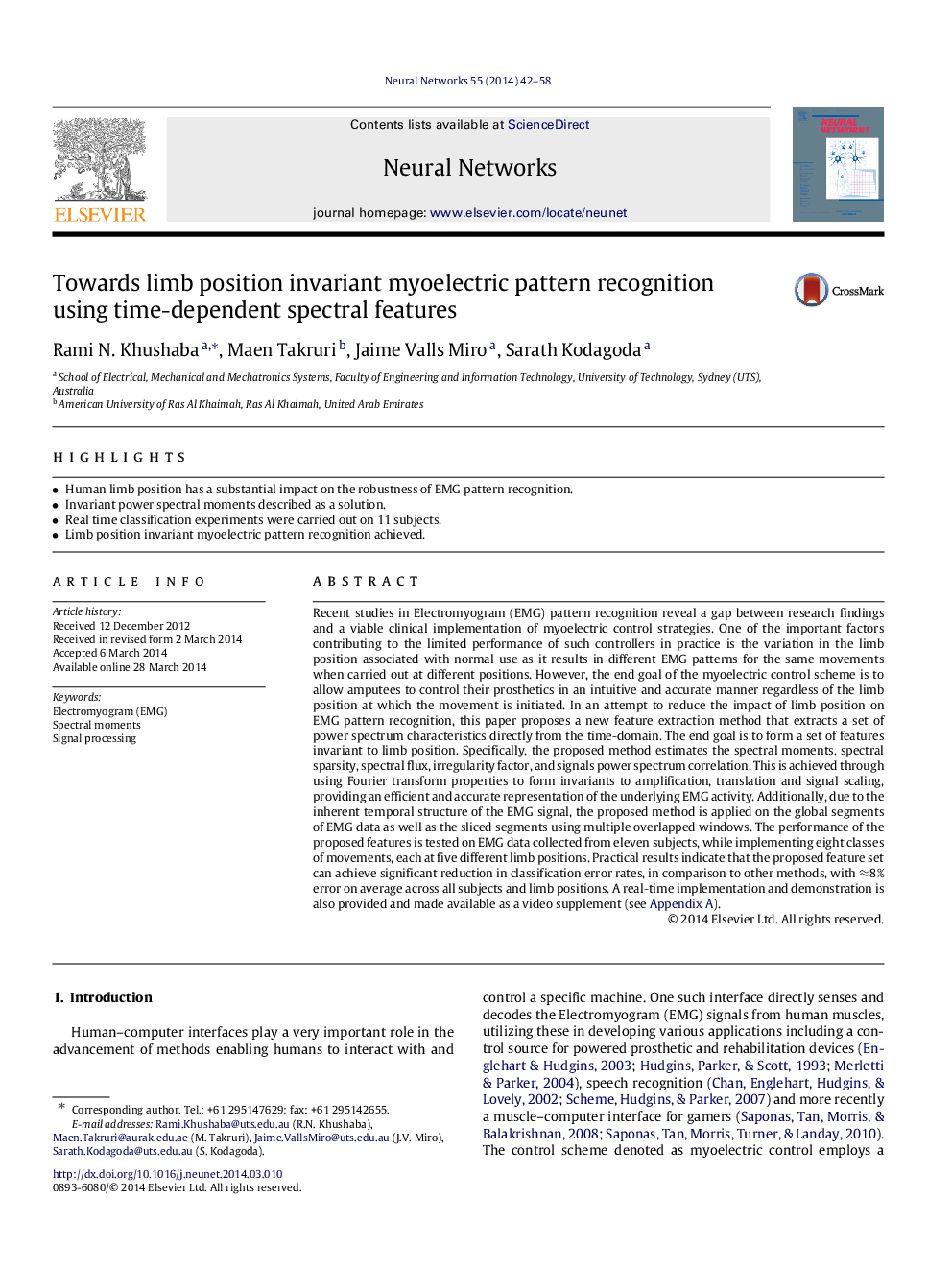| کد مقاله | کد نشریه | سال انتشار | مقاله انگلیسی | نسخه تمام متن |
|---|---|---|---|---|
| 403966 | 677376 | 2014 | 17 صفحه PDF | دانلود رایگان |
• Human limb position has a substantial impact on the robustness of EMG pattern recognition.
• Invariant power spectral moments described as a solution.
• Real time classification experiments were carried out on 11 subjects.
• Limb position invariant myoelectric pattern recognition achieved.
Recent studies in Electromyogram (EMG) pattern recognition reveal a gap between research findings and a viable clinical implementation of myoelectric control strategies. One of the important factors contributing to the limited performance of such controllers in practice is the variation in the limb position associated with normal use as it results in different EMG patterns for the same movements when carried out at different positions. However, the end goal of the myoelectric control scheme is to allow amputees to control their prosthetics in an intuitive and accurate manner regardless of the limb position at which the movement is initiated. In an attempt to reduce the impact of limb position on EMG pattern recognition, this paper proposes a new feature extraction method that extracts a set of power spectrum characteristics directly from the time-domain. The end goal is to form a set of features invariant to limb position. Specifically, the proposed method estimates the spectral moments, spectral sparsity, spectral flux, irregularity factor, and signals power spectrum correlation. This is achieved through using Fourier transform properties to form invariants to amplification, translation and signal scaling, providing an efficient and accurate representation of the underlying EMG activity. Additionally, due to the inherent temporal structure of the EMG signal, the proposed method is applied on the global segments of EMG data as well as the sliced segments using multiple overlapped windows. The performance of the proposed features is tested on EMG data collected from eleven subjects, while implementing eight classes of movements, each at five different limb positions. Practical results indicate that the proposed feature set can achieve significant reduction in classification error rates, in comparison to other methods, with ≈8%≈8% error on average across all subjects and limb positions. A real-time implementation and demonstration is also provided and made available as a video supplement (see Appendix A).
Journal: Neural Networks - Volume 55, July 2014, Pages 42–58
